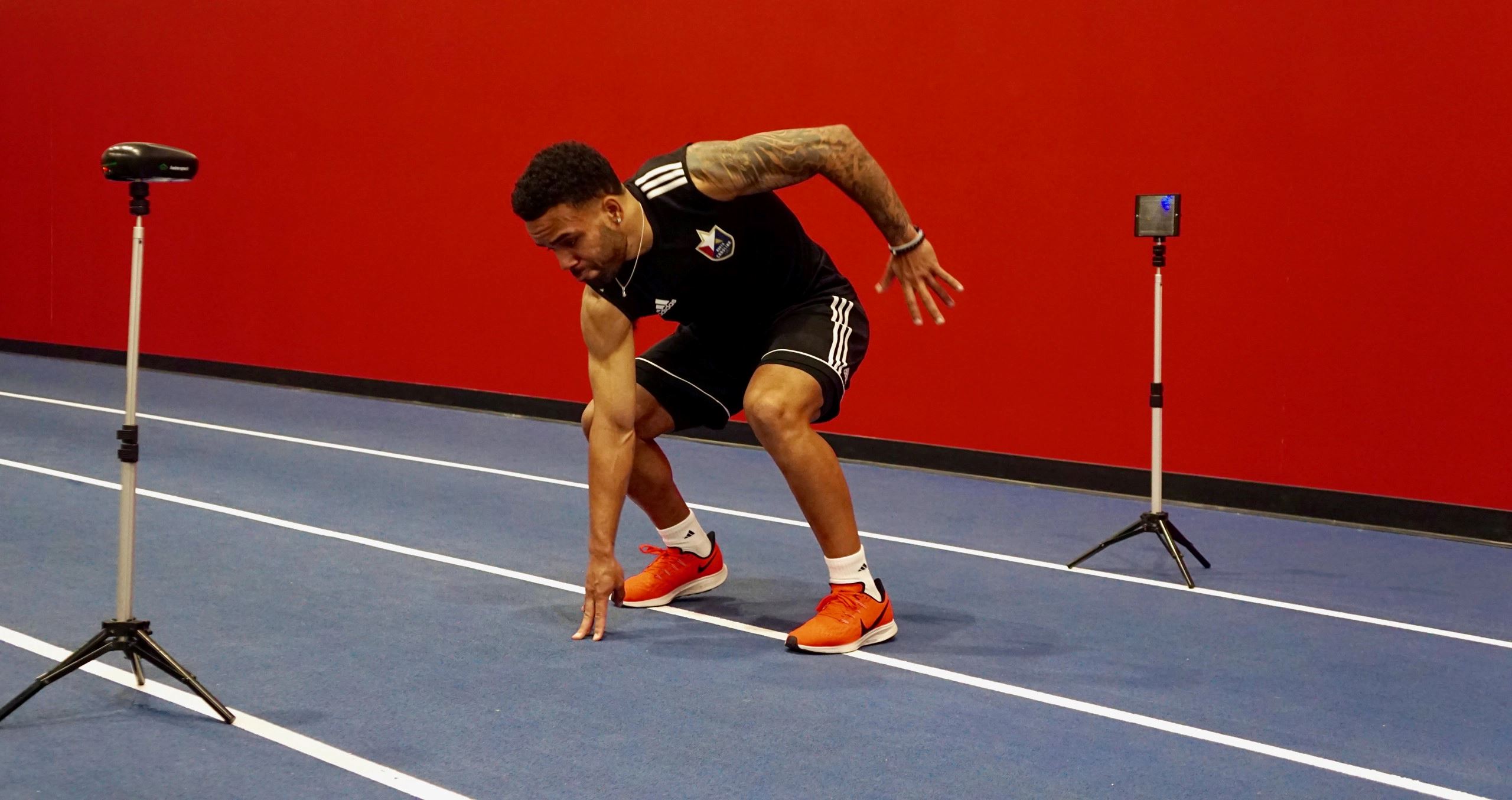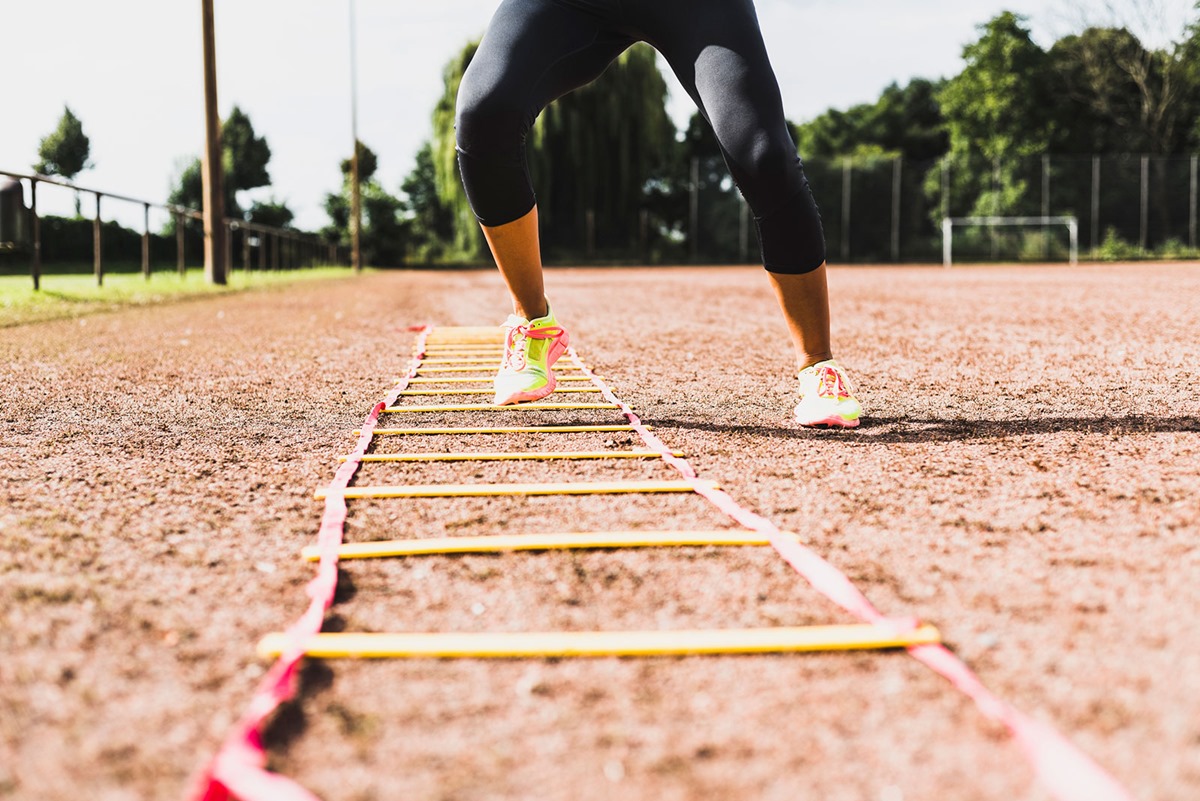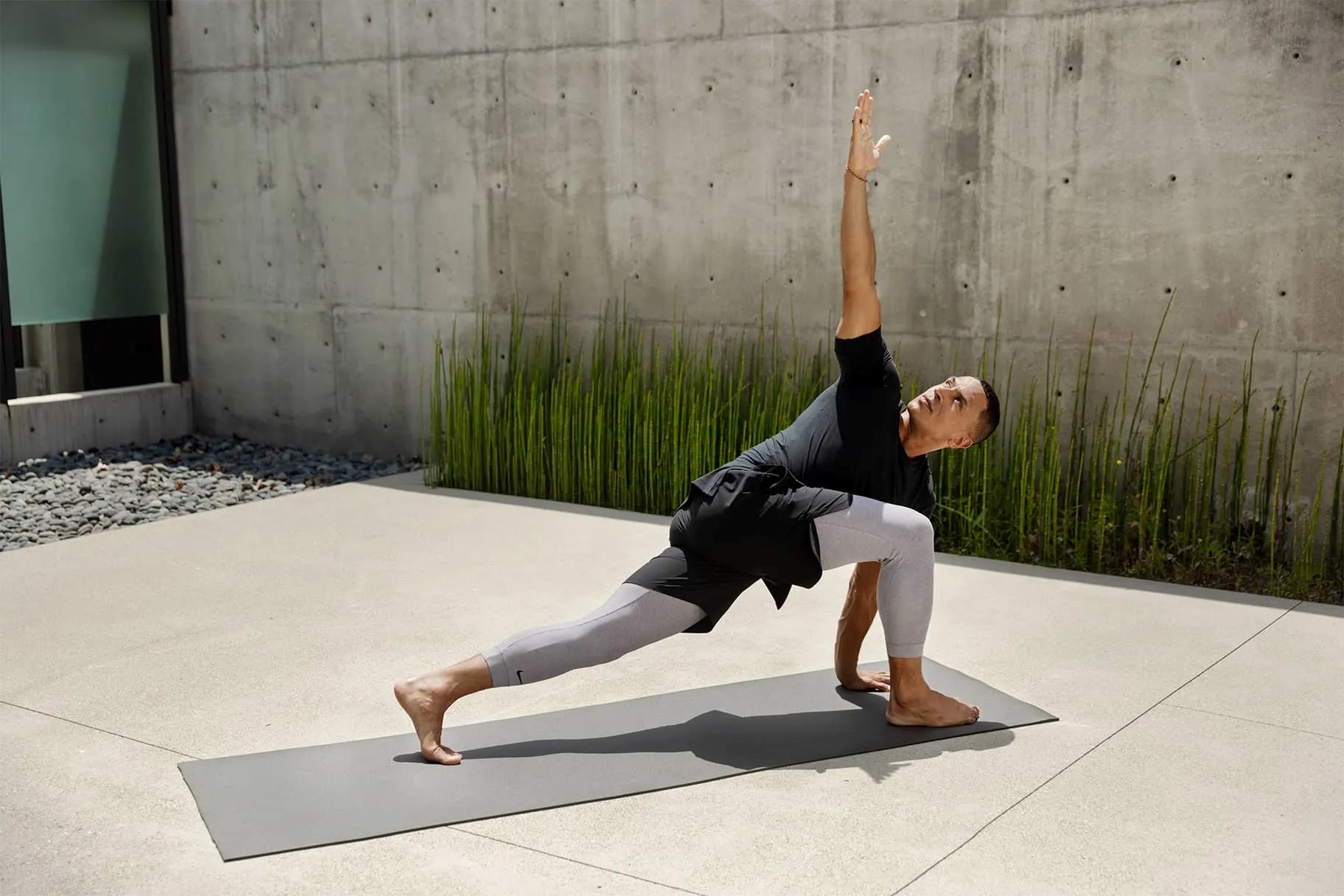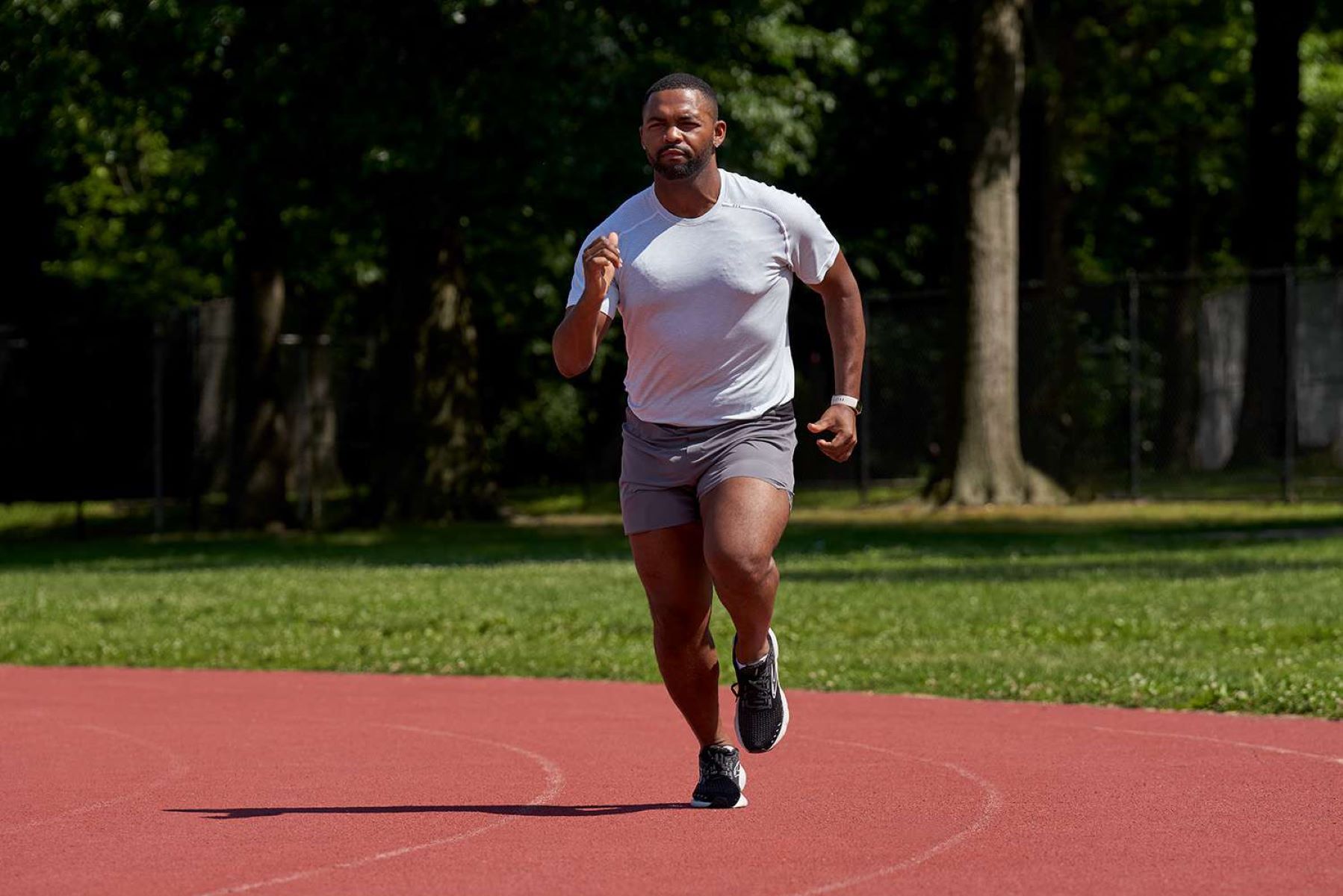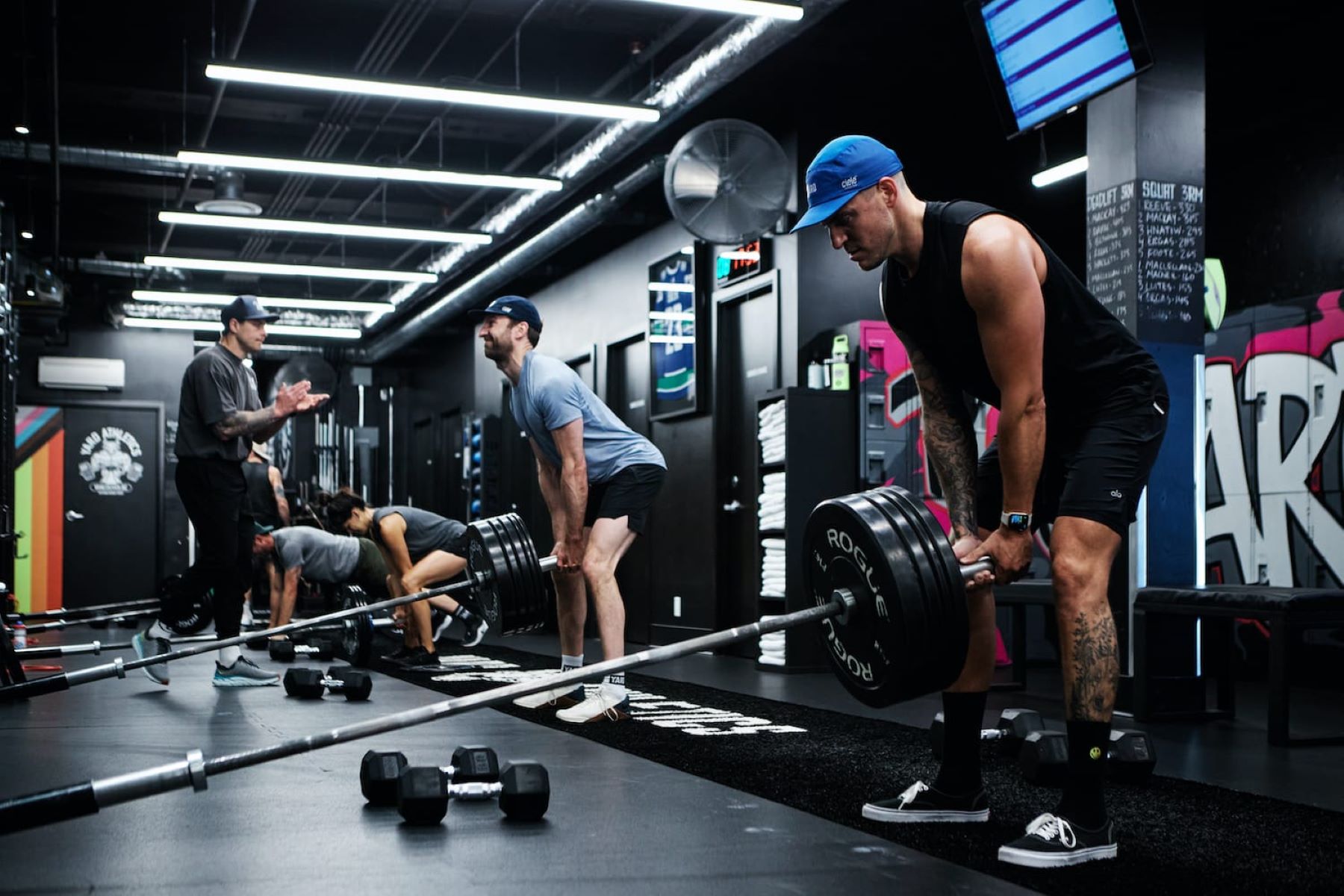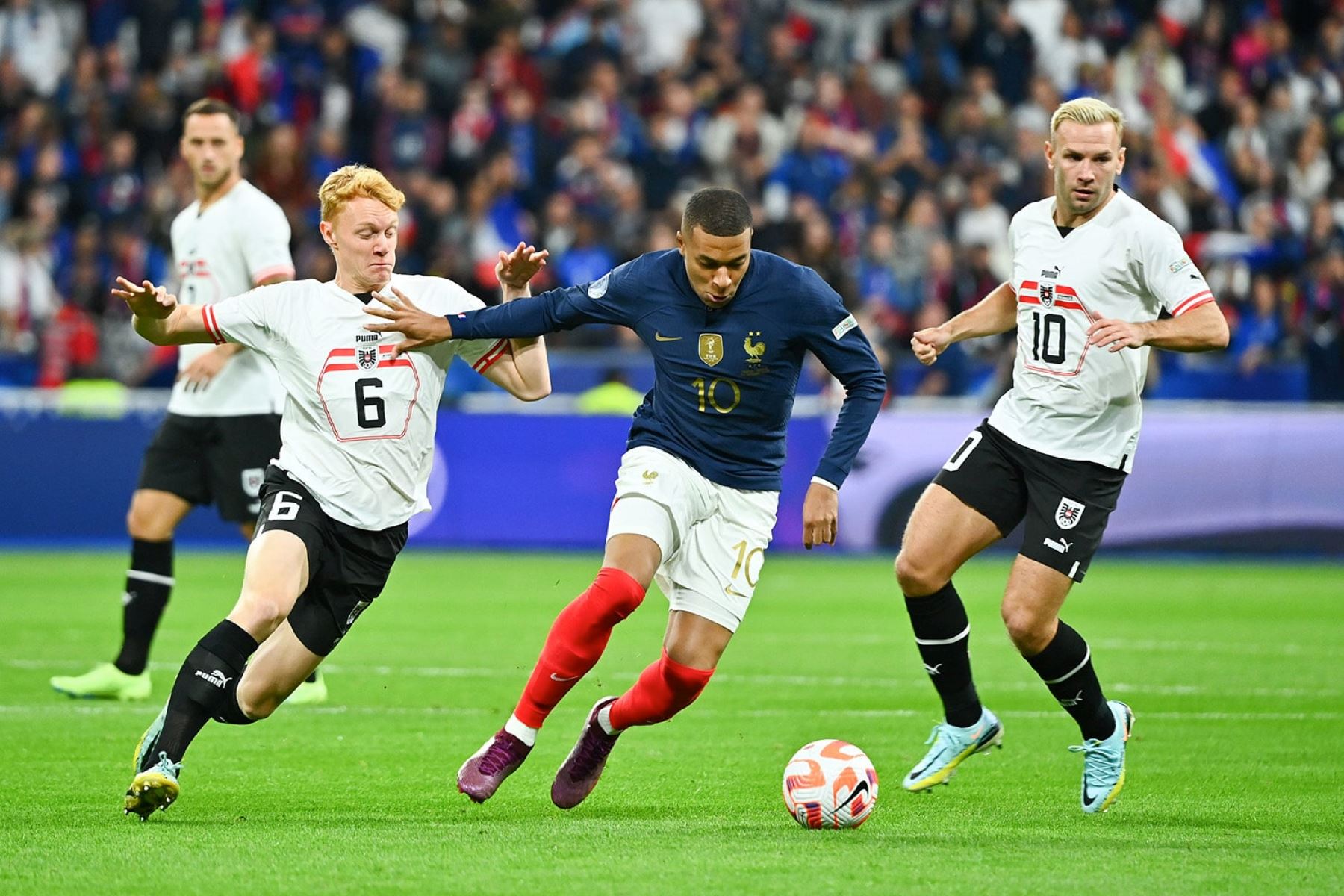

Featured
How To Sprint Faster For Soccer
Modified: January 2, 2024
Learn how to sprint faster for soccer with our featured training program. Improve your speed, agility, and performance on the field for a winning edge
Introduction:
When it comes to soccer, there’s no denying the importance of speed. The ability to sprint quickly can be a game-changer, allowing players to outrun opponents, make crucial plays, and create scoring opportunities. Whether you’re a professional athlete or a passionate amateur, improving your sprinting speed can elevate your performance on the soccer field.
In this article, we will delve into the world of sprinting for soccer and explore various techniques, exercises, and training methods that can help you sprint faster. Whether you’re a striker looking to increase your acceleration or a defender aiming to catch up with speedy opponents, this guide will provide you with valuable insights to improve your speed on the pitch.
Speed in soccer is not just about sheer velocity; it’s about agility, power, and technique. To be an effective sprinter, you need to develop a strong foundation in these areas. From warm-up routines to proper sprinting technique, from strength and conditioning exercises to agility drills, we will cover all the essential aspects of sprinting for soccer.
Not only will we discuss how to enhance your sprinting speed, but we will also focus on injury prevention and the importance of rest and recovery. Sprinting can place significant strain on your muscles and joints, so it’s vital to maintain an optimal balance between training intensity and recovery time.
Whether you’re a beginner or an experienced player, this article will provide you with a comprehensive roadmap to improve your sprinting speed for soccer. So, tighten your shoelaces and get ready to take your game to the next level!
Importance of Sprinting in Soccer:
Sprinting is a fundamental skill in soccer that can significantly impact a player’s performance on the field. Here are a few reasons why sprinting is so crucial in the game:
- Explosive Acceleration: Soccer is a fast-paced sport that requires players to cover short distances rapidly. Being able to accelerate quickly allows players to burst past defenders, create scoring opportunities, and reach loose balls faster.
- Breaking Through Defenses: In a game where scoring goals is the ultimate objective, sprinting becomes vital when trying to break through stubborn defenses. By outpacing defenders, players can create openings and exploit gaps in the defensive line, providing their team with a strategic advantage.
- Chasing Down Opponents: Soccer is a dynamic sport where players constantly need to react to the movements of their opponents. Sprinting allows players to chase down opposing players who are on a breakaway, preventing potential scoring opportunities and helping their team regain possession.
- Tracking Back on Defense: Defense is a crucial aspect of the game, and sprinting plays a vital role in tracking back and closing down opponents. Being able to quickly recover and sprint back to your defensive position can help prevent the opposition from creating scoring chances.
- Counterattacking: Sprinting is the cornerstone of effective counterattacking in soccer. When the opposing team loses possession, quick sprints forward can catch them off guard and lead to fast and lethal counterattacking plays, resulting in goals and victories.
- Winning 50-50 Balls: In a competitive game, winning the battle for loose balls and aerial duels is vital. Sprinting to reach those 50-50 balls first can give a player an advantage, allowing them to gain possession and launch an attack or maintain control of the ball.
Overall, sprinting in soccer is more than just running fast. It’s about gaining a competitive edge, being able to react swiftly, and executing game-changing plays. Mastering the art of sprinting can elevate a player’s performance and help their team achieve success on the soccer pitch.
Preparing for Sprint Training:
Before diving into sprint training, it’s essential to prepare your body to handle the intense physical demands that come with it. Here are some key steps to consider when preparing for sprint training:
- Warm-up: A proper warm-up routine is crucial to prevent injuries and maximize your sprinting performance. Start with light cardiovascular exercises like jogging or cycling to increase blood flow to the muscles. Then, incorporate dynamic stretches that target the muscles you’ll be using during sprinting. Dynamic stretches include leg swings, high knees, lunges, and hip rotations.
- Build Core Strength: A strong core is vital for maintaining proper form and stability during sprints. Incorporate core exercises such as planks, Russian twists, and medicine ball twists into your training routine to strengthen your abdominal and lower back muscles.
- Focus on Flexibility: Flexibility plays a crucial role in sprinting. Incorporate static stretches after your warm-up and at the end of your training session to improve your range of motion. Target muscles like the quadriceps, hamstrings, calves, and hip flexors to increase flexibility and reduce the risk of injury.
- Gradually Increase Intensity: When starting sprint training, it’s essential to progress gradually to avoid overexertion and injury. Begin with shorter sprints at a moderate pace and gradually increase both the distance and speed as your body adapts to the training. This progressive overload approach helps build endurance and speed over time.
- Proper Footwear: Wearing the right footwear can make a significant difference in your sprinting performance. Invest in a pair of lightweight, cushioned, and supportive athletic shoes that are designed specifically for sprinting. The right shoes can provide adequate traction, stability, and shock absorption to enhance your sprinting technique.
- Stay Hydrated and Fuel Your Body: Hydration is crucial for optimal performance and recovery. Drink plenty of water throughout the day and before, during, and after your sprint training sessions. Additionally, fuel your body with a balanced diet rich in carbohydrates, proteins, and healthy fats to provide the energy needed for intense sprinting workouts.
- Listen to Your Body: Pay attention to any signs of fatigue or discomfort during sprint training. Pushing through pain can lead to injuries, so it’s essential to listen to your body and take breaks or modify exercises if needed. It’s always better to prioritize proper form and injury prevention over pushing yourself too hard.
By following these steps and incorporating them into your training routine, you can effectively prepare your body for sprint training, minimize the risk of injury, and maximize your sprinting performance on the soccer field.
Proper Technique for Sprinting:
Having the right technique is essential for maximizing your sprinting speed and efficiency. Here are some key elements to focus on when it comes to proper sprinting technique:
- Proper Body Position: Maintain an upright posture with your head facing forward and your shoulders relaxed. Avoid excessive leaning or hunching, as this can hinder your sprinting speed and power.
- Powerful Arm Action: Your arms play a crucial role in sprinting. Bend your elbows at approximately 90 degrees and drive them backward forcefully with each stride. Ensure that your arm swing is coordinated with your leg stride to generate maximum power and maintain balance.
- Quick and Powerful Leg Drive: Focus on driving your knees forward and extending your legs fully with each stride. Maintain a high knee lift and engage your hip flexors to generate power. Push off with the balls of your feet and emphasize a quick and explosive ground contact.
- Strong Torso Stability: Engage your core muscles to stabilize your torso during sprinting. A strong core helps maintain proper body alignment and transfers power efficiently from your upper body to your lower body.
- Cadence and Stride Length: Find a balance between cadence (how quickly your legs cycle) and stride length. Increasing your cadence without sacrificing stride length allows for faster and more efficient sprinting. Focus on maintaining a quick turnover while still covering significant ground with each stride.
- Breathing: Pay attention to your breathing pattern while sprinting. Take deep breaths and try to exhale forcefully during your footstrike to help unleash more power and maintain a steady rhythm.
- Focusing on the Finish Line: Visualization can be a powerful tool in sprinting. Keep your eyes focused on a specific point in the distance, such as the finish line or a target marker, to maintain focus and drive towards your goal.
Remember, mastering proper sprinting technique takes practice and repetition. Incorporate technique-focused drills into your training routine to reinforce these elements and develop muscle memory for efficient sprinting.
By honing your sprinting technique, you can optimize your stride mechanics, increase your speed potential, and ultimately enhance your performance on the soccer field.
Strength and Conditioning Exercises for Speed:
Building strength and conditioning is crucial for improving sprinting speed on the soccer field. Here are some effective exercises to incorporate into your training regimen:
- Squat Jumps: Start in a squat position and explode upward, performing a vertical jump. Land softly back into the squat position and repeat. This exercise strengthens the lower body muscles and enhances explosive power.
- Deadlifts: Deadlifts target multiple muscle groups, including the hamstrings, glutes, and lower back. They help improve overall lower body strength and explosive power which are essential for sprinting.
- Lunges: Lunges focus on strengthening the quads, hamstrings, and glutes while improving stability and balance. Perform forward, backward, and lateral lunges to target different muscle groups and develop strength in various movement patterns.
- Step-Ups: Step-ups effectively target the quadriceps, hamstrings, and glutes. Use a box or platform to step up with one leg at a time. This exercise mimics the explosive push-off motion during sprinting.
- Single-Leg Squats: Also known as pistol squats, this exercise strengthens the entire lower body, particularly the quads and glutes. It also helps improve balance and stability, which are crucial for sprinting.
- High-Intensity Interval Training (HIIT): Incorporate HIIT workouts into your training routine to improve conditioning and promote fat loss. Alternate between short bursts of maximum effort sprints and active recovery periods.
- Hill Sprints: Running uphill forces your muscles to work harder, enhancing leg strength and power. Find a steep hill and sprint up it, focusing on driving your knees and maintaining proper form.
- Resistance Band Exercises: Incorporate resistance band exercises to add resistance and increase the challenge of your sprint training. Work on lateral band walks, forward jumps with bands around your ankles, and resisted sprints to strengthen the hip abductors and improve overall power output.
- Plyometric Exercises: Plyometric exercises, such as box jumps and bounding drills, enhance explosive power and improve the stretch-shortening cycle, preparing your muscles to generate maximum force with each stride.
- Core Exercises: A strong core provides the foundation for efficient movement during sprinting. Incorporate exercises like planks, Russian twists, and medicine ball throws to develop core strength and stability.
Remember to perform these exercises with proper form and gradually increase the intensity and resistance as your strength improves over time. Additionally, it’s essential to have recovery days between intense strength and conditioning workouts to allow your muscles to rest and rebuild.
By incorporating these strength and conditioning exercises into your training routine, you can enhance your power, speed, and endurance, ultimately improving your sprinting performance on the soccer field.
Agility Drills to Improve Sprinting Ability:
Agility is a crucial component of sprinting ability in soccer. Incorporating agility drills into your training routine can help enhance your quickness, change of direction, and overall sprinting performance on the field. Here are some effective agility drills to consider:
- Ladder Drills: Agility ladder drills involve quick footwork patterns, enhancing your coordination and foot speed. Perform drills such as high knees, lateral quick steps, and in-and-out drills to improve your agility and reaction time.
- Cone Drills: Set up cones in various patterns and practice sprinting, weaving, and changing direction around them. This mimics the movements required during a soccer game and improves your ability to quickly transition in different directions.
- Shuttle Runs: Set up two cones a designated distance apart and sprint back and forth between them as fast as possible. Vary the distances to target different aspects of your sprinting ability and improve your acceleration, deceleration, and change of direction.
- Side Shuffle Drills: Focus on lateral movements by performing side shuffles while staying low and maintaining proper form. This drill helps improve your lateral quickness and ability to change directions rapidly.
- Figure 8 Cone Drill: Arrange four cones in a figure 8 shape and sprint around them, carefully navigating the turns and changing direction. This drill enhances your agility, speed, and coordination while simulating game-like movements.
- Reaction Drills: Set up cones or markers in a random pattern and have a partner call out different cues for you to react to. Practice sprinting and changing direction quickly based on these cues, improving your reaction time and decision-making skills on the field.
- Agility Hurdles: Incorporate small hurdles into your training routine to improve your ability to quickly step over obstacles. This helps enhance your stride length, foot placement, and coordination during sprints.
- Mirror Drills: Partner up with a teammate and mirror their movements as they perform various agility exercises. This drill helps improve your reaction time, agility, and ability to mimic and quickly adapt to different movements.
- Zigzag Runs: Set up cones in a zigzag pattern and practice sprinting in and out of them, focusing on quick changes of direction. This drill improves your agility, balance, and coordination during quick and sharp turns.
- Agility Dots: Use agility dots or markers on the ground to create different patterns and movements. Practice quick and precise footwork by moving in various directions, enhancing your agility, balance, and control.
When performing agility drills, focus on proper technique, speed, and quickness. Start with slower speeds and gradually increase your intensity and tempo as you become more comfortable with the movements.
By incorporating these agility drills into your training routine, you can improve your sprinting ability, enhance your on-field performance, and become a more agile and dynamic player on the soccer field.
Plyometric Exercises to Enhance Sprinting Power:
Plyometric exercises are a valuable addition to any sprint training program as they help develop explosive power, increase muscle strength, and improve the stretch-shortening cycle. These exercises involve quick, powerful movements that engage your muscles’ elastic properties. Incorporate the following plyometric exercises to enhance your sprinting power:
- Box Jumps: Start with a sturdy box or platform. Jump onto the box, ensuring you land softly with bent knees. Step or jump back down and immediately repeat. Box jumps improve lower body power and strengthen the muscles involved in sprinting.
- Broad Jumps: Stand with your feet shoulder-width apart, then explosively jump forward as far as you can, landing with soft knees. Broad jumps target the glutes and hamstrings, helping to improve explosive power and stride length.
- Depth Jumps: Stand on a raised platform or box. Step off the edge, dropping down, and land softly on both feet. As soon as you land, immediately jump vertically or forward. This exercise helps improve reactive strength, enhancing your ability to generate power quickly.
- Squat Jumps: Begin in a squat position and explosively jump up as high as possible, extending your hips, knees, and ankles fully. Land softly and immediately go into the next repetition. Squat jumps target the lower body muscles, building power and explosiveness.
- Bounding: Bounding involves exaggerated and powerful running strides, aiming to cover more ground with each stride. Push off with your toes and use your arms to propel yourself forward. Bounding exercises improve strength, power, and coordination, translating into improved sprinting speed.
- Single-Leg Bounds: Similar to regular bounding, perform this exercise on one leg. Drive your knee up, extend your hip, and propel yourself forward with each stride. Single-leg bounds target strength imbalances, improve stability, and develop power in each leg individually.
- Tuck Jumps: Begin in a standing position and explosively jump up, tucking your knees towards your chest mid-air. As you land, immediately go into the next repetition. Tuck jumps enhance power, coordination, and explosive strength in your lower body.
- Split Squat Jumps: Start in a lunge position with one leg forward and the other leg back. Jump explosively, switching the position of your legs mid-air. Focus on landing softly and maintaining proper form. Split squat jumps target the muscles involved in sprinting and help improve power and explosive leg drive.
- Depth Push-Ups: Start in a push-up position with your hands on elevated platforms, such as blocks or boxes. Lower yourself down and explosively push off the platforms, trying to get as much air as possible. This exercises targets the upper body muscles involved in sprinting, helping to generate power and enhance arm drive during sprinting.
- Ankle Hops: Stand tall with your feet together and hop vertically, using only your ankles. Keep your lower legs and knees straight throughout the exercise. Ankle hops improve ankle strength and power, which are crucial for quick foot turnover during sprinting.
Ensure you have a solid base of strength before incorporating plyometric exercises into your routine. Start with lower intensity versions of each exercise and gradually increase the intensity as you develop strength and power.
By including these plyometric exercises in your training program, you can enhance your sprinting power, explosiveness, and overall speed on the soccer field.
Sprint Workouts to Improve Soccer Performance:
Incorporating specific sprint workouts into your training routine can help take your soccer performance to the next level. These workouts focus on building speed, power, endurance, and replicating the demands of the game. Here are some sprint workouts to consider:
- Interval Sprints: Alternate between periods of maximum effort sprints and active recovery periods. For example, sprint at maximum effort for 30 seconds, then jog or walk for 90 seconds. Repeat this cycle for a specific number of sets or time duration. Interval sprints improve cardiovascular fitness, speed, and recovery between high-intensity efforts.
- Hill Sprints: Find a steep incline or hill and sprint up at maximum effort. Walk or jog back down for recovery, then repeat for a specific number of sets. Hill sprints strengthen the leg muscles and enhance power and explosive acceleration.
- Pyramid Sprints: Start with a short distance sprint (e.g., 20 meters), then gradually increase the distance with each repetition (e.g., 40 meters, 60 meters, 80 meters), and then work your way back down. Take rest intervals between each sprint. Pyramid sprints help build speed, endurance, and the ability to maintain a high level of performance over various distances.
- Sprint and Shuttle Combos: Combine straight sprints with shuttle runs to replicate the quick changes of direction and intensities required during a soccer game. For example, sprint 20 meters, perform a 10-meter shuttle run, then sprint 40 meters, followed by a 20-meter shuttle run. Repeat for multiple sets. This workout improves agility, speed, and the ability to transition between different actions on the field.
- Fartlek Training: Fartlek, meaning “speed play” in Swedish, involves alternating between fast and easy-paced running throughout a training session. During a soccer-specific fartlek workout, vary the intensity and duration of your sprints and recovery periods, mimicking the unpredictable nature of the game. Fartlek training improves cardiovascular fitness, speed, and the ability to adapt to different game situations.
- Tempo Runs: Tempo runs are longer-duration sprints performed at a submaximal effort. Run at a fast, controlled pace for a specified distance or time, maintaining a consistent rhythm. Tempo runs improve aerobic fitness, speed-endurance, and the ability to maintain a high intensity over extended periods.
- Partner or Team Relays: Set up relay races with teammates, taking turns sprinting short distances to simulate game-like scenarios. Relay races build teamwork, speed, and the ability to quickly exchange possession or take advantage of fast break opportunities.
- Over-Unders: Set up cones or markers in an overlapping pattern and sprint over some, then under others. This workout helps improve coordination, agility, and the ability to maintain speed during quick changes of direction.
- Multidirectional Speed Drills: Incorporate drills that involve sprinting forward, backward, laterally, and diagonally. Performing diagonal sprints and shuffles helps improve multidirectional speed, agility, and the ability to react quickly to game situations.
- Progressive Overload: Gradually increase the intensity, duration, or distance of your sprint workouts over time. This progressive overload approach challenges your body and allows for continuous improvement in speed, power, and overall performance.
Remember to warm up properly before each sprint workout, stretch afterward, and allow for sufficient recovery between intense workouts. It’s also essential to listen to your body and adjust the volume and intensity to avoid overtraining and injury.
By incorporating these sprint workouts into your training routine, you can improve your speed, power, endurance, and overall performance on the soccer field.
Recovery and Rest for Optimal Sprinting Performance:
Proper recovery and rest are essential components of any training program, especially when it comes to optimizing sprinting performance. Here are some key factors to consider for optimal recovery and rest:
- Active Recovery: Incorporate light activities such as jogging, cycling, or swimming on rest days to promote blood flow and aid in muscle recovery. Active recovery helps reduce stiffness, soreness, and fatigue, enhancing overall recovery.
- Proper Nutrition: Fueling your body with the right nutrients is crucial for recovery. Consume a balanced diet that includes carbohydrates for energy replenishment, high-quality proteins for muscle repair, and antioxidants to reduce inflammation. Stay hydrated and consider incorporating post-workout nutrition strategies such as protein shakes or nutritious meals within the first hour after intense training sessions.
- Quality Sleep: Sleep is when the body repairs and recovers. Aim for 7-9 hours of quality sleep each night to support optimal muscle recovery, hormone regulation, and mental well-being. Create a conducive sleep environment and establish a consistent sleep routine to ensure you get sufficient rest to aid in sprinting performance.
- Foam Rolling and Stretching: Use foam rollers, massage balls, or other self-massage tools to release muscle tension and enhance recovery. Incorporate stretching exercises to improve flexibility and reduce the risk of injuries. Focus on areas such as the calves, hamstrings, quadriceps, and hip flexors that are heavily engaged during sprinting.
- Periodization: Implement a structured training plan that includes periods of high-intensity training and lower-intensity recovery phases. Periodization allows for proper rest and recovery, preventing overtraining and reducing the risk of injuries. Vary the volume and intensity of your sprint workouts throughout the season to give your body the necessary time to adapt and recover.
- Listen to Your Body: Pay attention to your body’s signals and adjust your training accordingly. If you feel excessively fatigued, experience prolonged muscle soreness, or notice a decline in performance, take an extra rest day or reduce the intensity of your training. Pushing through extreme fatigue can lead to overtraining and hinder your sprinting performance.
- Alternate Training Modalities: Incorporate cross-training activities such as swimming, cycling, or yoga into your routine. Engaging in different training modalities allows for active recovery and provides a break from the repetitive stress of sprinting. It also helps develop overall fitness and strengthens muscles that may not be actively engaged during sprinting workouts.
- Ice Baths and Cold Therapy: Consider using ice baths or cold therapy techniques after intense training sessions. Cold therapy helps reduce inflammation, muscle soreness, and accelerates recovery. Take a cold shower, use ice packs, or immerse yourself in an ice bath for 10-15 minutes to experience the benefits.
- Weekly Rest Day: Designate at least one day each week as a complete rest day, where you refrain from any intense physical activity. Use this day to relax, recharge, and give your body the necessary time to repair and rebuild muscles.
- Stress Management: Stress, both physical and mental, can negatively affect recovery and overall performance. Incorporate stress management techniques such as meditation, deep breathing exercises, or engaging in hobbies to help reduce stress levels and promote a healthy recovery environment.
Remember, recovery and rest are just as important as the training itself when it comes to achieving optimal sprinting performance. By prioritizing proper recovery strategies, you can maximize the benefits of your training and stay injury-free, allowing you to perform at your best on the soccer field.
Conclusion:
Sprinting is a vital component of soccer, and improving your sprinting ability can have a significant impact on your performance on the field. Incorporating the right techniques, exercises, and training methods can help you sprint faster, react quickly, and outpace opponents. By following a comprehensive training plan that includes strength and conditioning exercises, agility drills, plyometrics, and targeted sprint workouts, you can enhance your speed, power, and endurance.
Proper preparation, including warm-up routines and focus on technique, sets the foundation for effective sprinting. Building strength and power through exercises like squats, lunges, deadlifts, and plyometrics helps generate the force necessary for explosive sprints. Agility drills improve quickness, coordination, and change-of-direction abilities, allowing you to navigate the field with ease.
Implementing specific sprint workouts, such as interval sprints, hill sprints, and shuttle runs, enhances your speed, endurance, and game-like agility. However, it’s crucial to prioritize recovery and rest as well. Engaging in active recovery, foam rolling, proper nutrition, and quality sleep aids in muscle repair, reduces fatigue, and prevents injuries. Periodization and listening to your body’s signals are vital to avoid overtraining and ensure long-term progress.
Remember, optimizing sprinting performance is a continuous process that requires consistent effort and dedication. By incorporating these strategies into your training routine, you can unlock your potential and excel in the fast-paced world of soccer. So lace up your cleats, focus on your technique, train smart, and get ready to leave your opponents in the dust on the soccer field!

